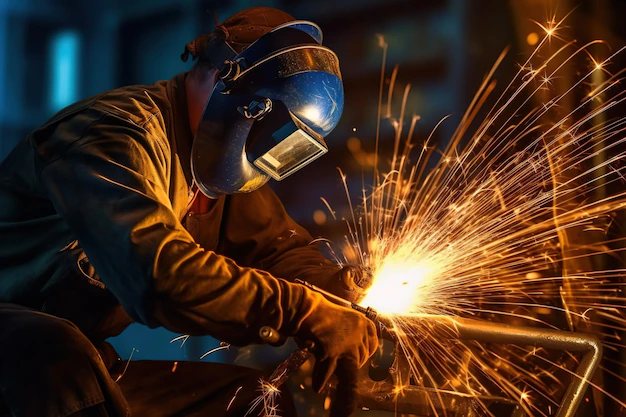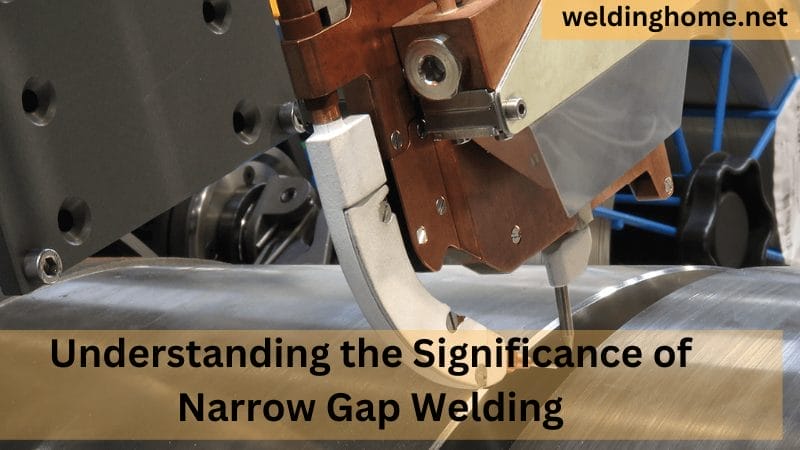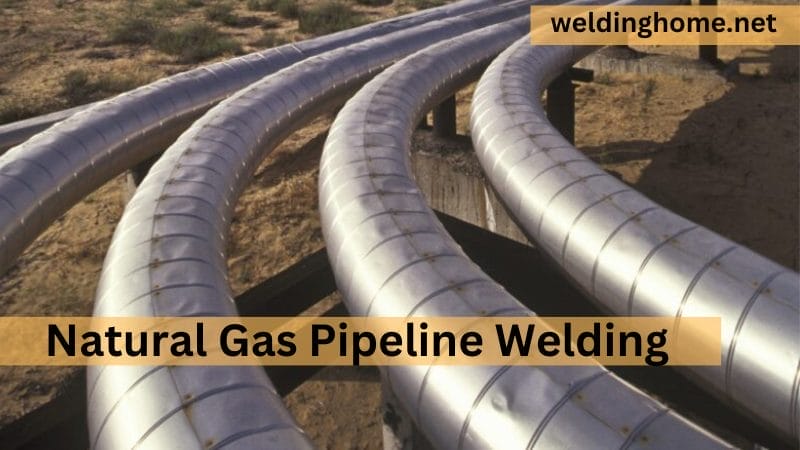Welding Without Cracks: Expert Tips and Techniques”

Introduction
Construction, manufacturing, and other sectors depend on welding. Welding cracks are a significant issue for welders and fabricators. These subtle flaws may weaken a weld, compromising product safety and performance.
This article will discuss welding fractures and how to avoid them. I intend to teach welders and hobbyists how to make lasting, high-quality welds by analyzing these fractures and using best practices and advanced approaches.
I shall examine Welding Without Cracks: Expert Tips and Techniques” I will completely guide in this article on what sources, Material preparation, welding method, and joint design in the following parts. After reading this article, you will understand welding cracks and how to prevent them in your welding tasks.
Understanding the Basics of How to Welding Without Cracks
Following our advice will ensure a Welding Without Cracks. Advice for strong, faultless welding. Learning the fundamentals of welding is necessary before delving into professional suggestions for Welding Without Cracks.
A solid foundation in the basics of welding is required before progressing to more complex methods of Welding Without Cracks. The process of joining two or more metal components together requires melting and fusing them together. To prevent the formation of cracks in the welded joint, high levels of precision and attention to detail are required. Investigate the challenges of making a perfect weld without sacrificing quality.
Common Causes of Cracks in Welding

The occurrence of welding cracks may be attributed to several factors, and it is essential to comprehend these underlying causes to mitigate their formation effectively. The following are a few prevalent factors contributing to the occurrence of Welding Without Cracks.
Residual Stress: Residual stress is a phenomenon that occurs in metals during the welding process, wherein the application of heat causes expansion followed by contraction upon cooling. The formation of residual stresses in the welded joint and its adjacent regions might give rise to the occurrence of fractures.
Insufficient Material Preparation: Dirt or contaminants on the base metals increase the likelihood of fracture formation. The presence of surface impurities, such as rust, paint, oil, or moisture, can compromise the strength of the connection between metallic materials. To mitigate the occurrence of cracking, it is necessary to do a comprehensive cleaning and preparation process.
Flawed Welding Technique: “Avoid excessive heat application, sudden cooling, and uneven heat dispersion to weld without cracks. Controlling welding is key to preventing fractures. In our guide to ‘Welding Without Cracks,’ we explain how to master control and ensure a faultless welding experience.”
Welding Speed: The welding speed should be carefully controlled to avoid issues. Excessive velocity hinders the metal’s proper cooling and solidification process, augmenting the fracture formation likelihood.
Joint Design: The design of the joint has a crucial role in its overall performance. Insufficient joint design can generate areas of high stress that are susceptible to the occurrence of cracks.
Material Selection: The selection of welding materials is crucial in determining the compatibility and susceptibility to cracking. Incorrectly choosing welding materials or electrodes that do not match the joined metals may lead to incompatibility issues and an elevated risk of crack formation.
Hydrogen Embrittlement: Hydrogen embrittlement occurs when hydrogen becomes entrapped inside the weld, leading to the development of brittleness and the production of cracks, particularly in steels with high-strength properties.
Overheating or Underheating: The application of excessive heat may lead to the condition of overheating, while insufficient heat might result in the occurrence of underheating. Both situations can potentially result in the formation of fractures in the weld.
Inadequate Filler Material: If you use a suitable filler material or apply it correctly, it could leave vital spots in the weld that make it more likely that cracks will form.
Lack of Post-Weld Heat Treatment: The absence of post-weld heat treatment might result in fractures in the welded metal due to the failure to alleviate residual tensions.
Understanding these underlying factors and implementing appropriate measures to alleviate their impact is paramount to preventing welding cracks. Professionals who are skilled in both welding and engineering are significant for making sure that welding operations are done correctly. This lowers the risk of cracks and makes it easier to create strong welds that last a long time.
Types of cracks in welding

In welding, several types of cracks can develop in the welded joint, each with its characteristics and causes. Understanding these crack types is crucial for identifying and preventing them. Here are the common types of cracks in welding:
Indeed, here are descriptions of various welding defects and issues, along with their causes:
Underfill:
- Description: Underfill refers to a depression or groove below the surface of the weld bead. It can weaken the weld and affect its structural integrity.
- Causes: Underfill can occur due to insufficient filler material, improper welding technique, or an incorrect angle.
Undercut:
- Description: Undercut is a groove along the edges of the weld that can reduce the strength of the weld joint.
- Causes: It is typically caused by excessive heat or incorrect welding parameters, leading to the melting and erosion of the base metal at the edges of the weld.
Poor Penetration:
- Description: Poor penetration occurs when the weld metal does not penetrate the base metal sufficiently, resulting in a weak weld.
- Causes: This can happen due to inadequate heat or improper welding techniques, preventing the weld metal from adequately fusing with the base material.
Lack of Fusion:
- Description: Lack of fusion is a condition where the weld metal doesn’t fuse with the base metal or the previous weld pass, leading to a weak joint.
- Causes: It can result from inadequate heat, poor welding angle, or improper welding techniques.
Spatter:
- Description: Spatter refers to tiny metal droplets that can land on the work surface or surrounding areas, causing surface imperfections.
- Causes: Excessive heat, incorrect shielding gas, or poor electrode quality can lead to spatter during welding.
Porosity:
- Description: Porosity is the presence of small gas pockets or voids in the weld, weakening its structure.
- Causes: When welding, contamination, improper shielding gas, or inadequate gas coverage are frequently to blame.
Overlap:
- Description: Overlap occurs when the weld metal extends beyond the base metal’s surface, creating a raised edge.
- Causes: It is typically a result of excessive heat input or improper welding techniques.
Inclusion:
- Description: Inclusions are foreign materials, such as slag or particles, trapped in the weld, compromising strength.
- Causes: Inclusions can occur due to poor cleaning, improper electrode handling, or improper shielding.
Excess Reinforcement:
- Description: Excess reinforcement is an excessive buildup of weld metal above the base metal’s surface.
- Causes: It is often a result of too much filler material or improper welding techniques.
Cracks:
- Description: Cracks are fractures or separations in the weld or surrounding areas, posing a significant structural risk.
- Causes: Cracks can result from various factors, including high stress, inadequate preheating, and improper welding parameters.
Burn Through:
- Description: Burn-through Causes: Inadequate heat input, welding at an incorrect angle, or improper welding procedures are the usual causes. Occurs when excessive heat melts through the base metal, creating a hole or gap in the weld.
- Causes: Inadequate heat input, welding at an incorrect angle, or improper welding procedure are the usual causes.
These descriptions provide insight into common welding defects and their underlying causes, highlighting the importance of proper welding techniques and quality control measures to ensure solid and reliable welds.
How do we fix the causes of cracks in welding?
- Identify the kind of crack (heat, cold, stress) to identify the remedial treatments.
- Before welding, clean and prepare base metals.
- Adjust heat input and welding conditions to avoid overheating and underheating, which may cause cracks.
- Avoid stress spots that might break by welding properly and slowly.
- Select the right electrode and filler material for your welding metals to ensure compatibility and strength.
- Use preheating for thicker materials to minimize cracking and post-weld heat treatment to remove residual tensions.
- To spot weld faults and cracks early, check and test them regularly. It ensures prompt intervention and repair.
- Existing cracks may need grinding and re-welding using the correct procedures and filler material.
- Select a suitable joint design to reduce stress concentrations and improve uniform stress distribution, lowering cracking risk.
To apply the necessary corrective measures to complex or crucial welding projects, consult with experienced welding specialists and engineers.
These ten tips cover a variety of welding crack repair methods. These rules will improve the quality and integrity of your welds and prevent fractures.
Expert Tips for Crack-Free Welding
Here are some critical tips for crack-free welding:
- Before welding, clean the base metals of impurities, corrosion, paint, and moisture. Clean surfaces improve adhesion and decrease cracks.
- Choose the Right Electrode and Filler:
- Select electro. It strengthens the binding and reduces incompatibility fractures.
- Control welding heat precisely. Overheating or quick cooling may create cracks, so avoid it.
- Keep your welding speed low to achieve a smooth, homogeneous weld that reduces stress concentrations.
- Carefully design the joint to disperse stress. A well-designed joint lowers cracking stress points.
- Try preheating for thicker materials and post-weld heat treatment to reduce residual tensions. These techniques greatly minimize crack risk.
These recommendations will improve your welding job and reduce welding cracks, delivering a strong and lasting weld.
Conclusion
Crack-free welding is essential. Weld quality affects many applications’ structural integrity and dependability. Welders may assure structural integrity and defect-free projects by knowing fracture sources, using professional advice and methods, and committing to accuracy and best practices.
Preparation, material selection, and welding process management are essential for fixing hot, cold, and stress fractures. Joint design, electrode choice, and preheating and post-weld heat treatment help welders avoid cracks.
Welders may consistently create high-quality, crack-free welds that improve the safety and longevity of many industrial and structural applications by following these principles. Excellence makes welding without fractures possible in metals.
Frequently Asked Questions
What causes cracks in welding most of the time?
Failure to properly prepare the Material, using the wrong welding methods, welding at too high of a speed, or not designing the joint properly can all cause cracks in the weld.
To avoid cracks in my welding work, what can I do?
To avoid cracks, ensure the Material is prepared correctly, pick the right electrode, keep the heat at the right level, control the welding speed, and use advanced methods such as preheating and heat treatment after the join.
Can cracks in welding happen because the joint wasn’t appropriately designed?
Yes, bad joint design can cause stress points, making the welded joint more likely to crack.
What is backstep welding, and how does it keep things from cracking?
Backstep welding is when you weld in the opposite direction of how you usually would. This method lowers stress and makes it less likely that cracks will form.






